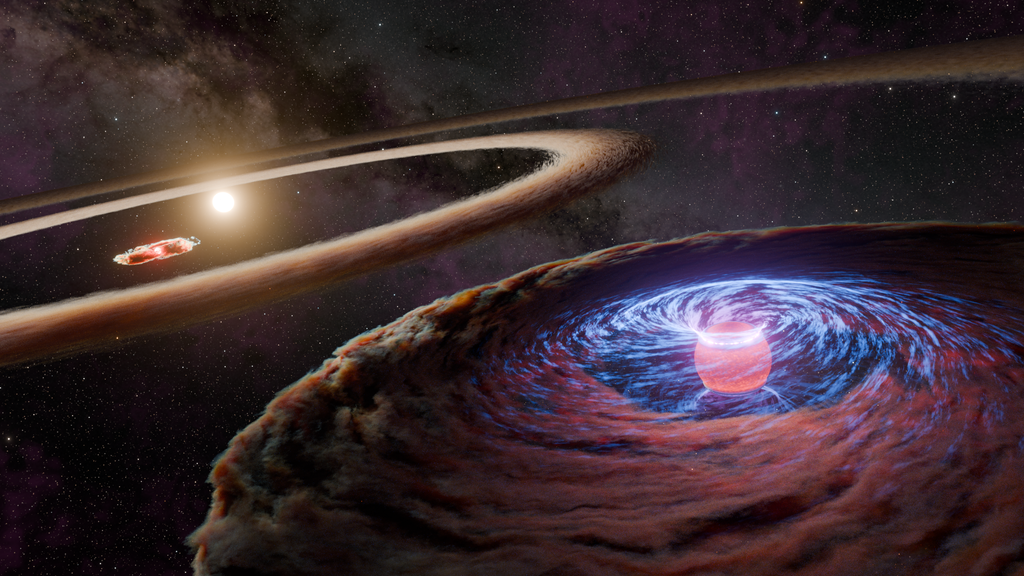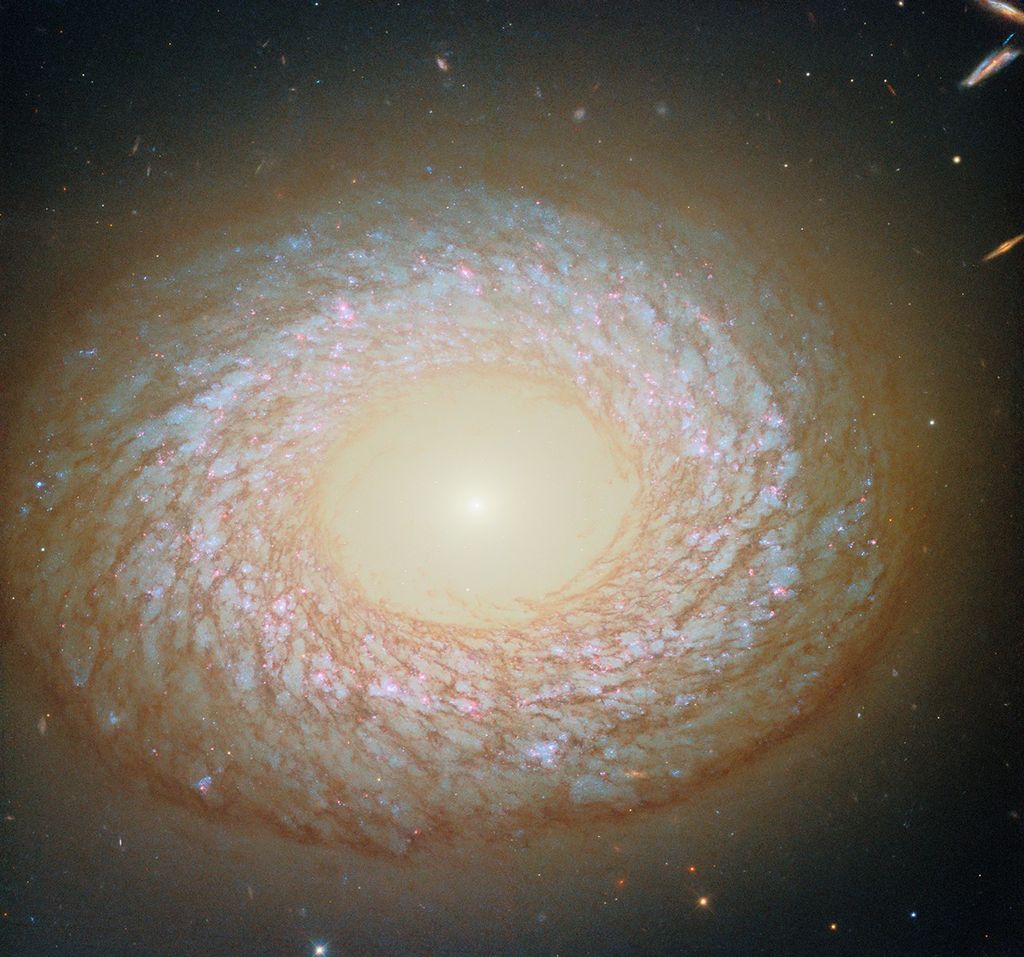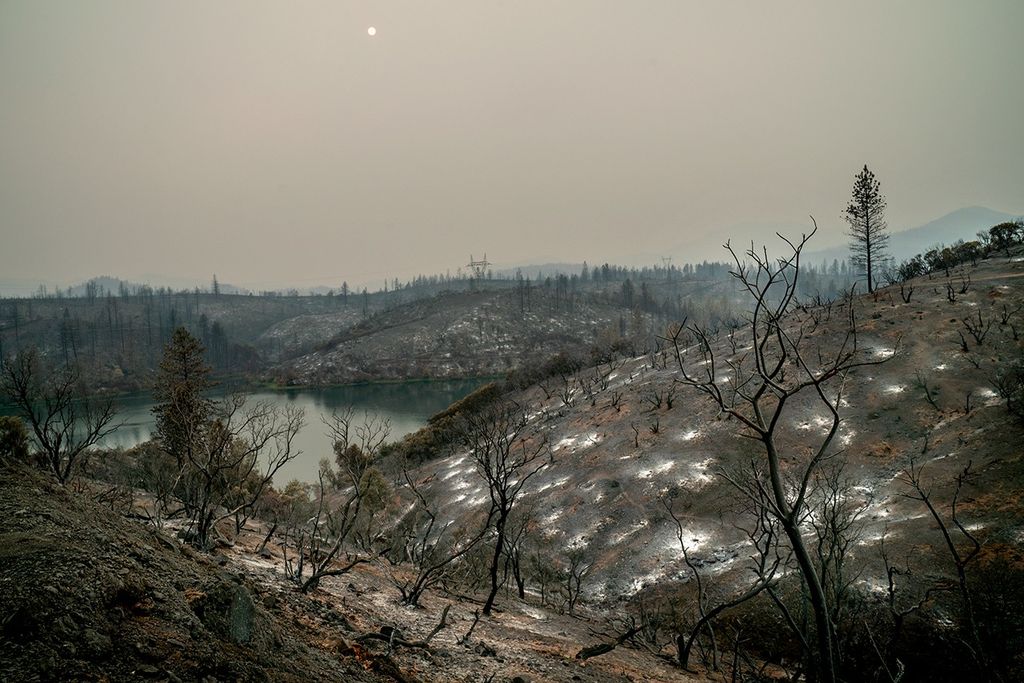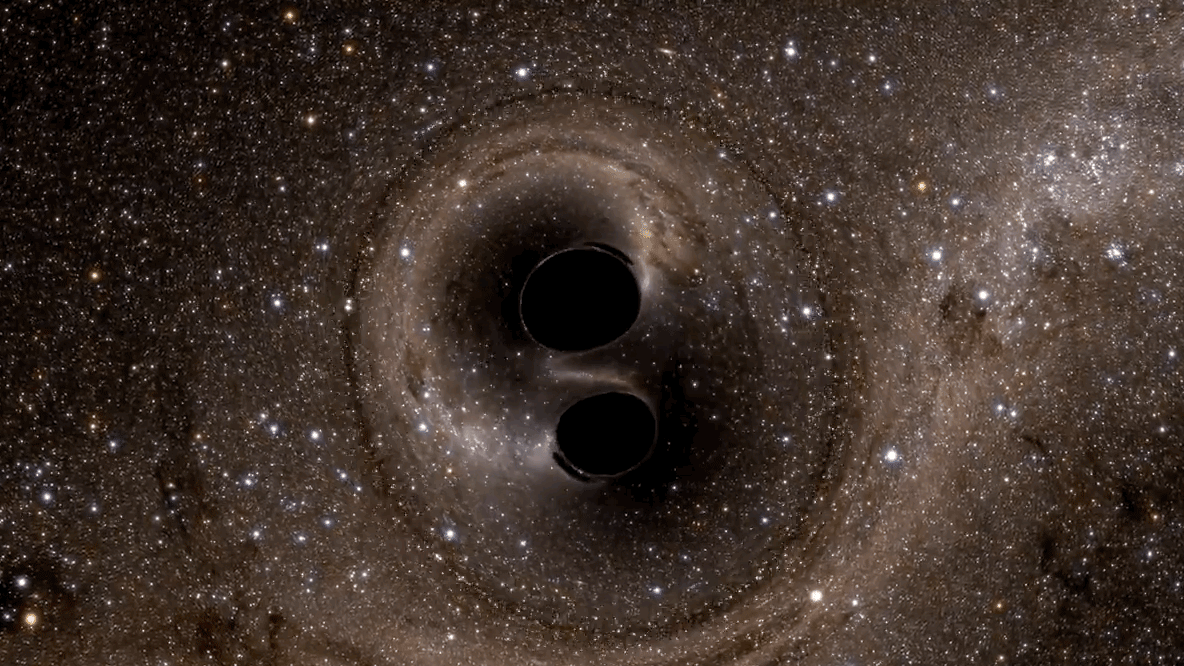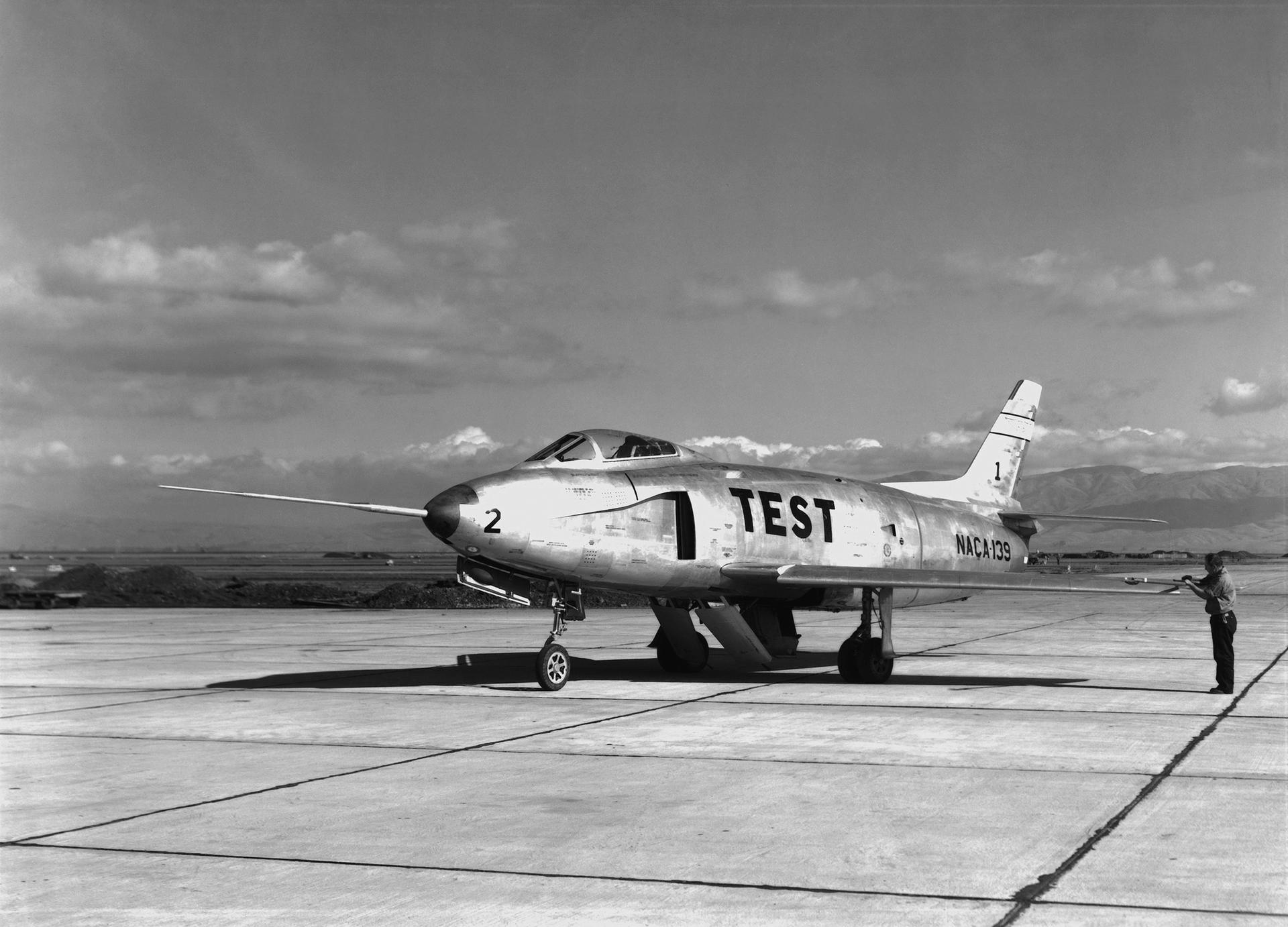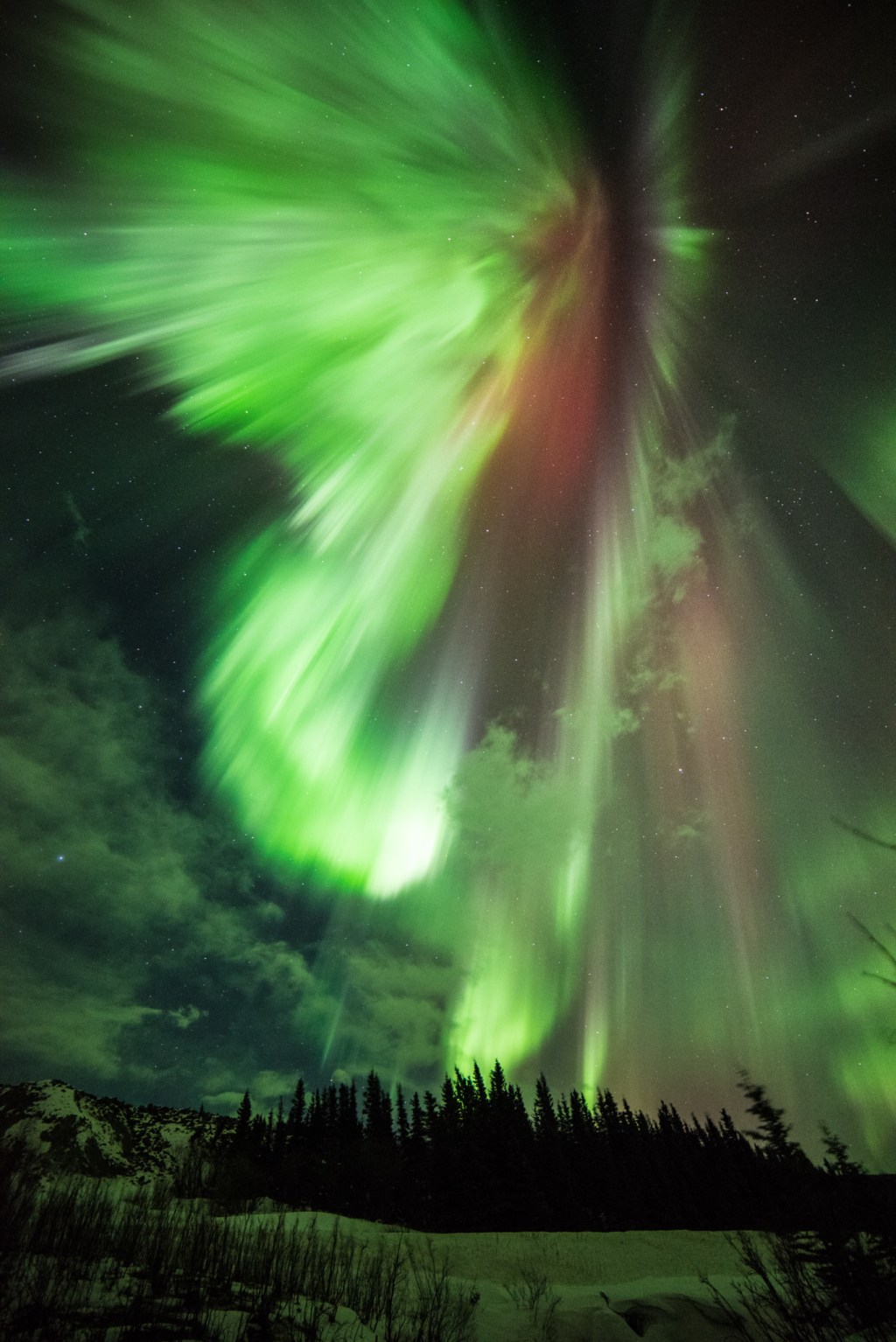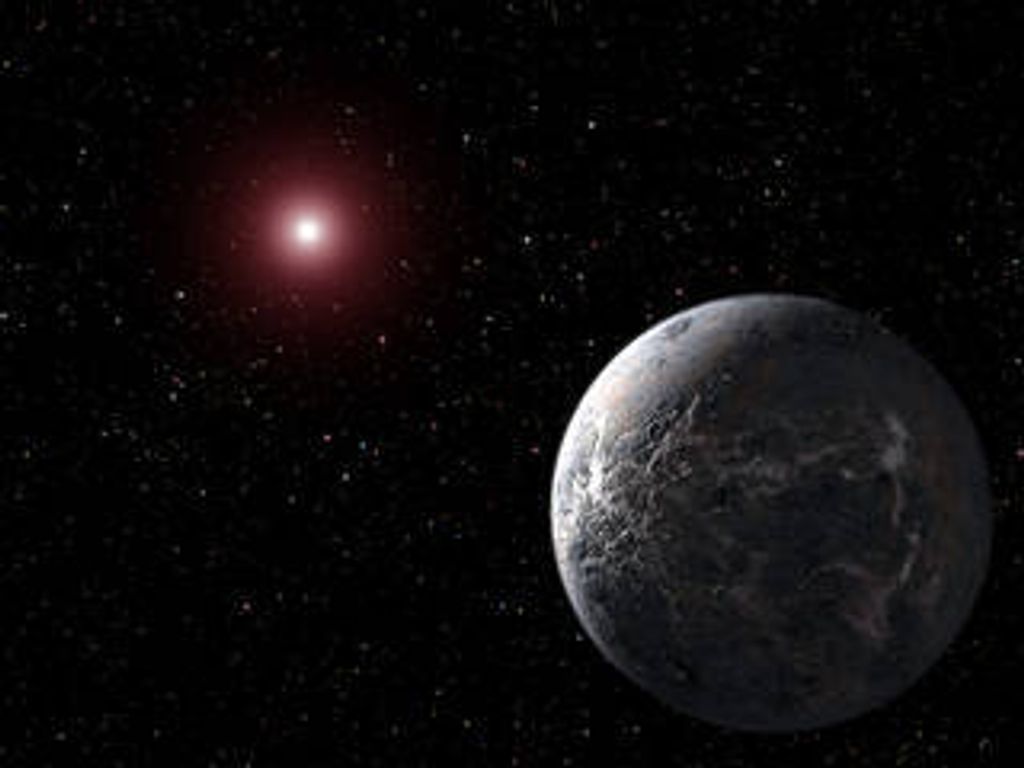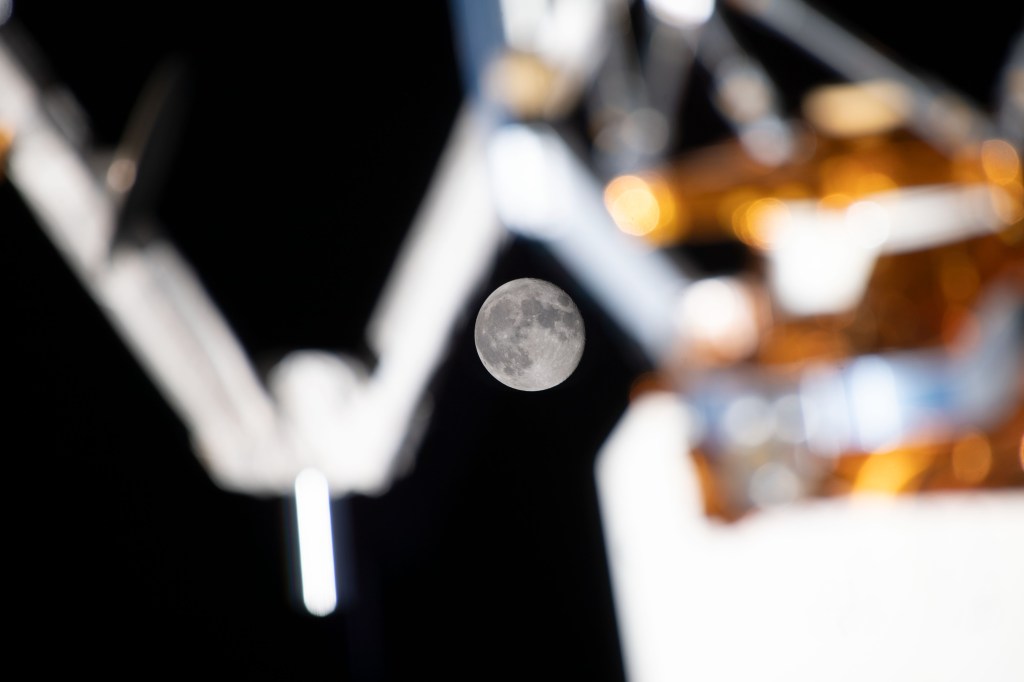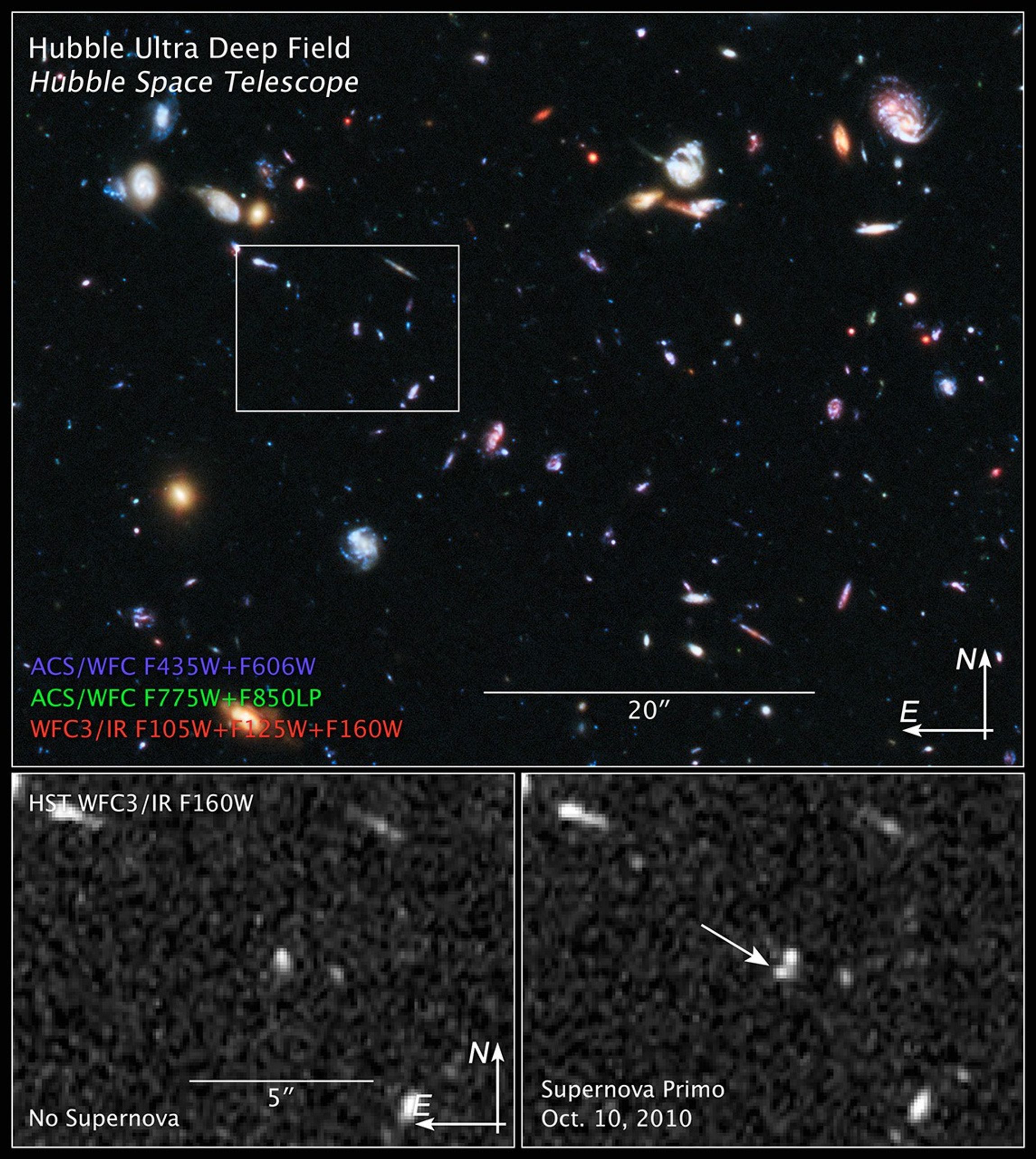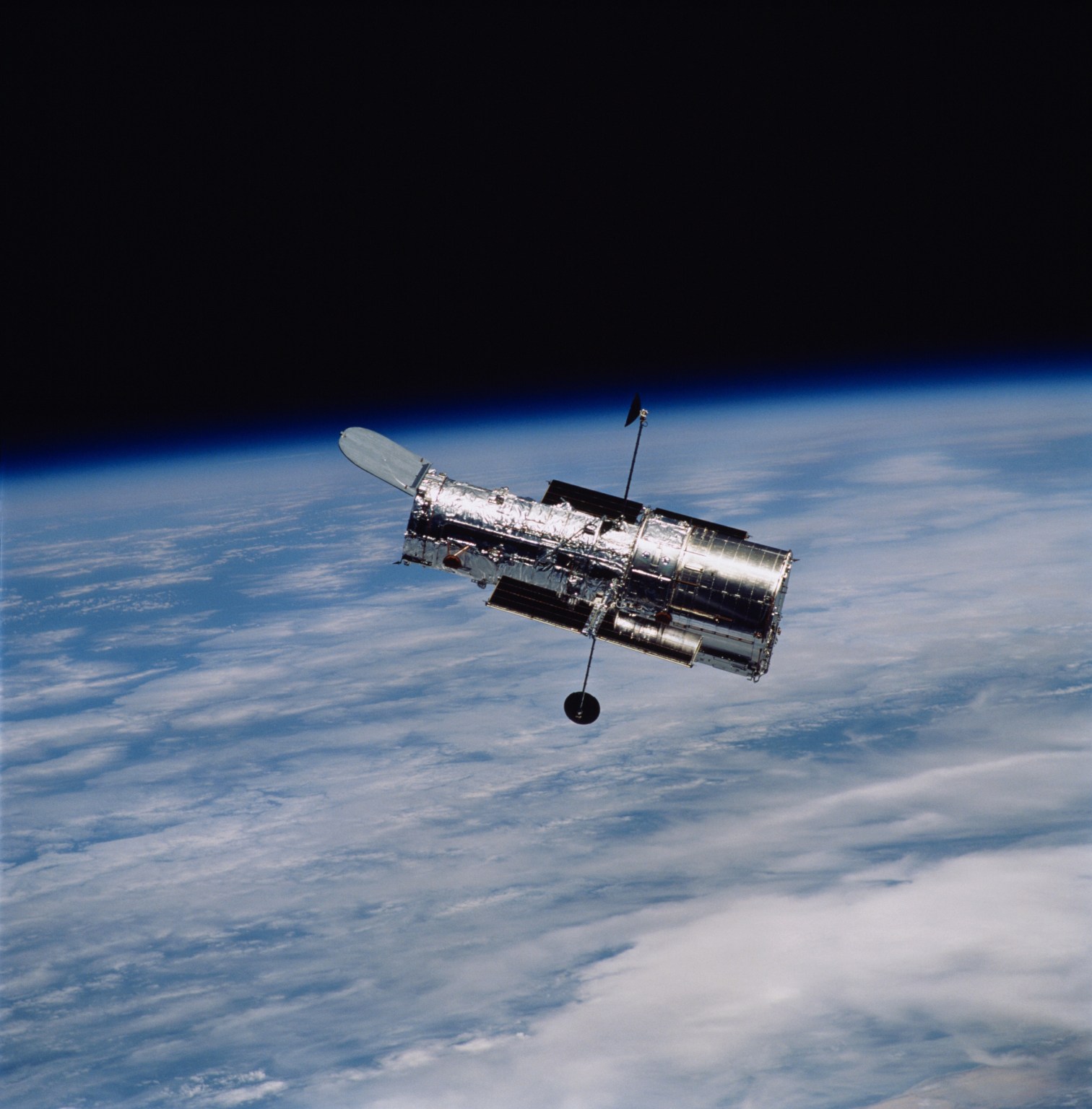1 min read
Hubble Ultra Deep Field Continues to Tell the Unfolding Story of the Universe

Beginning in 2004, the Hubble Space Telescope has observed a spot in the sky known as the Hubble Ultra Deep Field (HUDF) many times. The extremely deep and detailed cumulative exposure reveals some of the faintest objects ever detected, some of which turn out also to be among the most distant galaxies known. Studying this set of images has allowed astronomers to understand the scale, structure, and development of the universe much more completely and precisely.
The first set of deep HUDF images were made with Hubble's Advanced Camera for Surveys (ACS) in 2004. The addition of the Wide Field Camera 3 to Hubble's complement of instruments in 2009 extended the reach of the HUDF beyond visible light, farther into the infrared, to reveal even more distant galaxies. Due to the expansion of the universe, distant objects appear redder because they are moving away from us faster than closer objects. The most distant objects are red-shifted so much that they cannot be detected at all in visible light, but appear only at infrared wavelengths.
Observing the same field repeatedly adds exposure to reveal fainter objects but the longer time span of data also increases the chance of detecting a supernova. Supernovae are extremely violent explosions of single stars resulting in a flash of light bright enough to outshine an entire galaxy of hundreds of billion stars. Although a supernova is relatively rare in any one galaxy, so many galaxies appear in the HUDF that several supernovae have been seen in this small part of the sky in the time that Hubble has been observing. A particular type of Supernova, known as Type Ia is especially important because their intrinsic brightnesses are all nearly equal. Since a more distant source of light will appear dimmer than a nearer object of the same brightness, the observed brightness of a Type Ia supernova tells us its distance.
Observations of many supernovae have allowed astronomers to refine the understanding of the universe's structure. Recently, these studies have revealed the existence of a mysterious force causing the universe to expand ever faster, a phenomenon now known as "dark energy."
This image combines numerous exposures made in visible and infrared light with Hubble's Advanced Camera for Surveys (ACS) and near infrared with the Wide Field Camera 3 infrared channel (WFC3/IR). ACS images from blue and yellow-green filters are shown in blue, ACS red and near infrared filters in green, and WFC3 infrared light in red.
About the Object
- R.A. PositionR.A. PositionRight ascension – analogous to longitude – is one component of an object's position.03h 32m 38.01s
- Dec. PositionDec. PositionDeclination – analogous to latitude – is one component of an object's position.-27° 46' 39.08"
- ConstellationConstellationOne of 88 recognized regions of the celestial sphere in which the object appears.Fornax
- Object NameObject NameA name or catalog number that astronomers use to identify an astronomical object.Hubble Ultra Deep Field, HUDF
- Object DescriptionObject DescriptionThe type of astronomical object.Deep survey
- Release DateJanuary 11, 2012
- Science ReleaseNASA’s Hubble Breaks New Ground with Distant Supernova Discovery
- Credit
Related Images & Videos
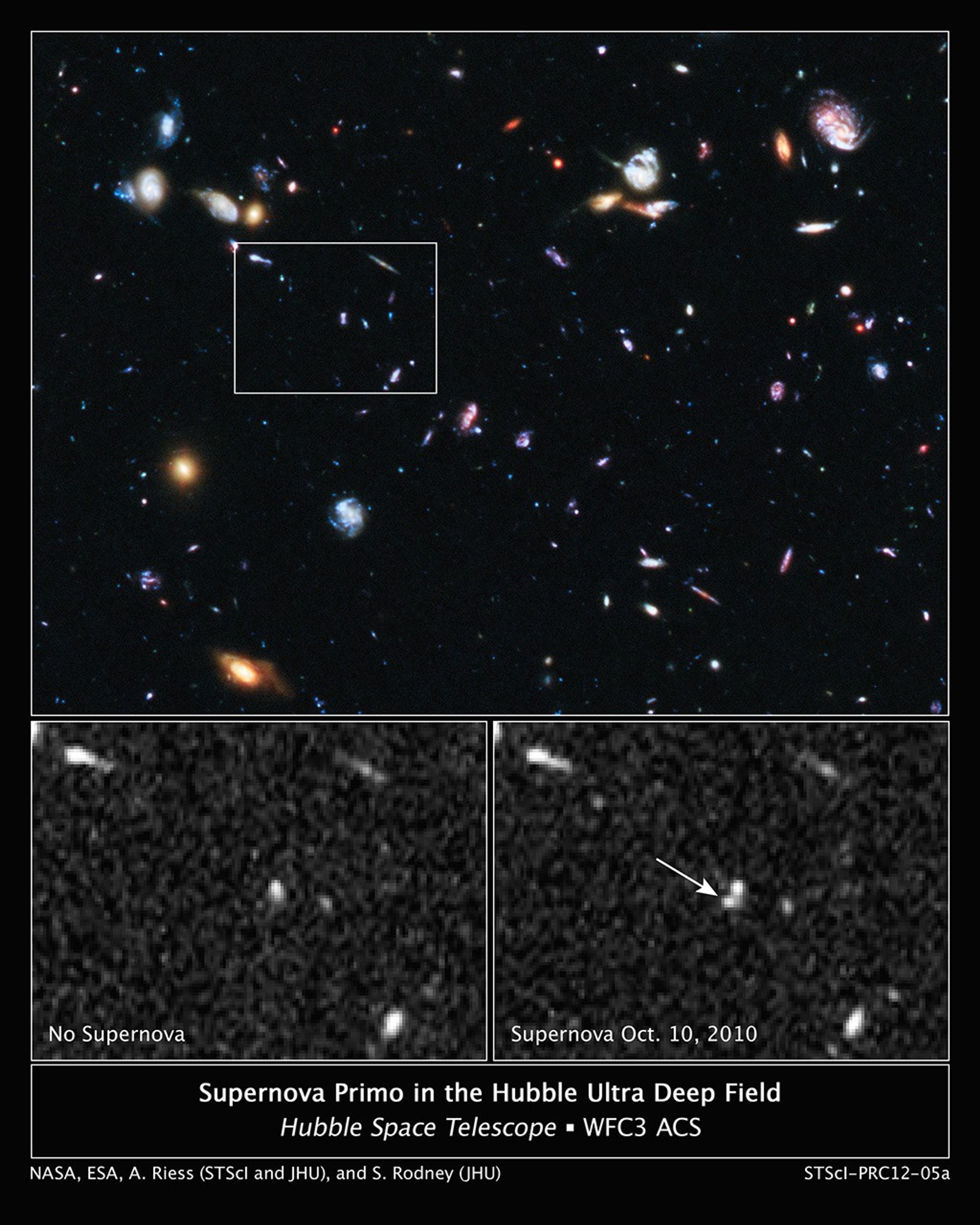
Hubble Snags One of the Farthest Exploding Stars
These three images taken by NASA's Hubble Space Telescope reveal the emergence of an exploding star, called a supernova. Nicknamed SN Primo, the exploding star belongs to a special class called Type Ia supernovae, which are distance markers used for studying dark energy and the...
Share
Details
Claire Andreoli
NASA’s Goddard Space Flight Center
Greenbelt, Maryland
claire.andreoli@nasa.gov

